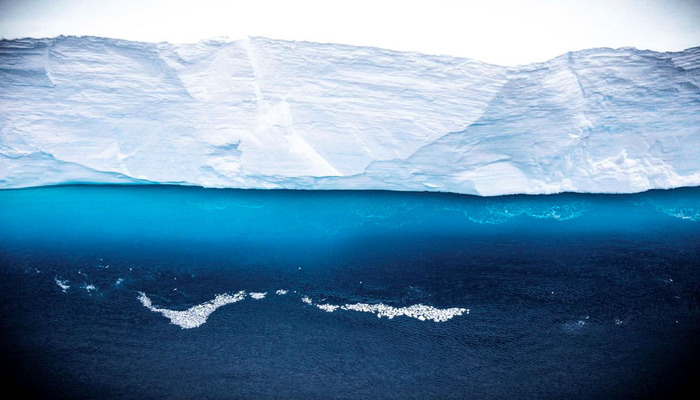
The world's largest iceberg has finally started moving after being stuck to the ocean floor for more than 30 years.
This massive iceberg, named A23a, parted ways with the Antarctic coastline in 1986 but quickly got stuck in the Weddell Sea and became what we can call an ice island.
According to a report published by BBC, the iceberg is double the size of Greater London, covering an area of almost 4,000 sq km (1,500 sq miles), which is now about to go beyond Antarctic waters while it was drifting slowly last year.
Read also: Rethinking origins of life: Scientists find fault in textbook theories
The iceberg is not only huge in width, but it's also impressively thick — about 400 metres — 90 metres taller than London's Shard, the tallest skyscraper in Europe.
Hosting a Soviet research station which was on a mission to disclose how long ago the iceberg split from the Antarctic coastline, A23a is one of the icebergs that broke off from the White Continent's Filchner Ice Shelf. Moscow sent an expedition to remove equipment from the site, fearing it might be lost.
Dr. Andrew Fleming, a remote sensing expert from the British Antarctic Survey, said, “It was stuck since 1986, but it was expected to decrease in size enough to lose grip and start moving. I noticed the first movement back in 2020.”
A23a has picked up speed in recent months due to winds and currents, and it's now crossing the northern tip of the Antarctic Peninsula.
Like most icebergs from the Weddell sector, A23a will probably be pushed into the Antarctic Circumpolar Current, a path known as 'iceberg alley' toward the South Atlantic.
Dr. Catherine Walker from the Woods Hole Oceanographic Institution, born in the same year as A23a, said, “In many ways these icebergs are life-giving; they are the origin point for a lot of biological activity. I identify with it; it's always been there for me.”
















